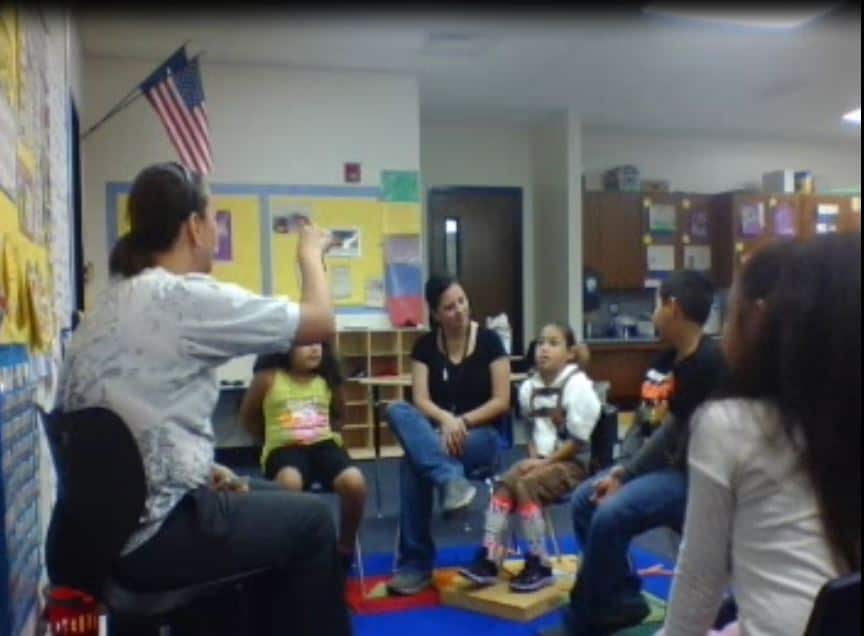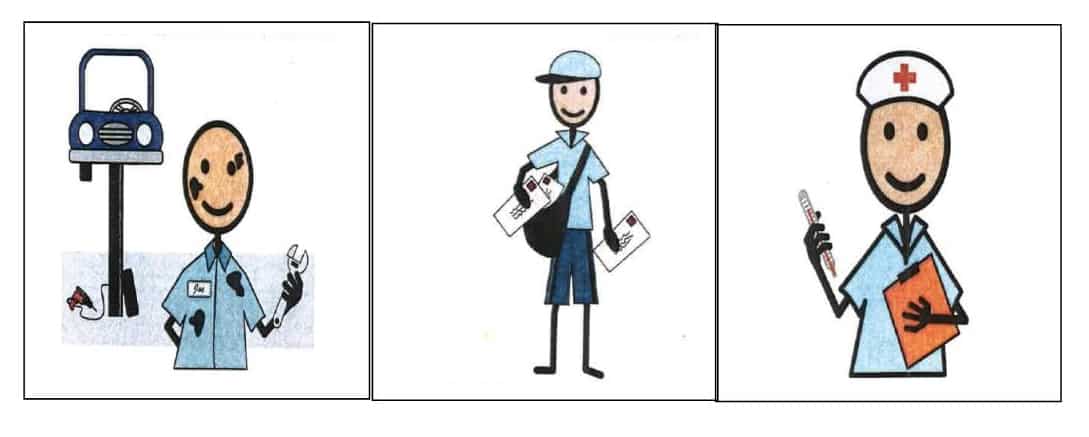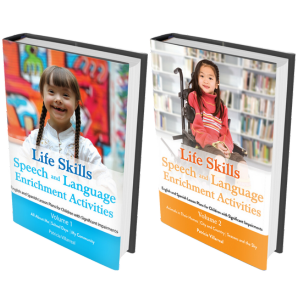For those of us who have or have had the opportunity to work in a Life Skills classroom we know that it is the most rewarding and most challenging experience. The problem is that this situation is almost always heavily weighted towards the challenging end of the spectrum. But does it have to be?
In a project we began in 2011, we asked ourselves what the greatest challenges of working in Life Skills classrooms are. These aren’t going to be unfamiliar to you.
- Wide range of impairments (cognitive, physical, behavioral, etc.)
- Variety of communication abilities
- Student schedules vary based on educational needs
- Lack of age appropriate materials/content to meet student needs
What makes for challenges in Life Skills classrooms?
It is the fact that we can never produce therapy materials that can be used again and again because each activity has to be individually modified for each individual student. [/box] The degree of severity across clients differs so radically. And what about augmentative communication, hearing loss, low vision, and reduced mobility? Can we reduce or eliminate the things that cause the most difficulty? If so, what should we focus on? The answer lies in the therapy planning itself.
This is the part of the story where I have to introduce you to Patricia Villarreal and her challenges in Life Skills classrooms. Patricia has been working extensively with PPCD and Life Skills classrooms both in her time in the schools in Dallas and now with her work in Austin. Moreover, she is bilingual, so everything that she has put together is available in Spanish and English.
The first time I heard her talk about this idea, I was struck by how novel it was. We are awash in information on goals, curriculum-based intervention, and inclusion. We make powerful therapy materials that we re-employ each year and that only get better as we add to them. But this would be a waste of time if we could never use them again.
In our work as speech-language pathologists, we have found great challenges in working with the students in life skills classrooms. These classrooms are generally self-contained units in that students are segregated from the general education population for a portion or all of their day in order to receive the support that they need to be successful in their community. Students in elementary life skills classrooms are generally between the ages of 6 and 12 years of age and they have one or more of the following disabilities:
- orthopedic impairment (OI)
- other health impairment (OHI)
- intellectual disability (ID)
- emotional disturbance (ED)
- learning disability (LD)
- speech impairment (SI)
- autism (AU)
- traumatic brain injury (TBI)
- auditory impairment (AI)
- visual impairment (VI)
Children in Life Skills classes have a severe level of impairment. It is our responsibility as professionals to expose them to age-appropriate material and content regardless of their level of functioning. Teachers are often overwhelmed at the seeming disconnect between the rigor of academic curriculum and the overall communication levels of these children. Language skills are the foundation of learning and it is our job to bridge the gap between a student’s current language skills and the way academic material is presented so that students are able to learn new concepts and participate to their fullest potential in the academic setting.
With ever increasing caseloads in the schools, we do not always have the luxury of providing therapy for students in a one-on-one setting. This fact drove our goal to structure sessions that introduce age-appropriate concepts and modify materials to address the unique needs of several students in the same session. The need to create intervention plans that not only contained content consistent with the school-based curriculum, but also could be easily modifiable, both physically and linguistically, catapulted the development of these units.
Here is what it looks like: Materials are made or gathered around a topic such as community. They vary in size, wording, and texture to accommodate different limitations. Included in this kit are suggestions on how to modify the activity based on physical or intellectual limitations. Here is an example from our All About Me chapter.
Modifications
| Physical Impairments- low mobility | Felt board- less travel and participation with large group, family member cutouts on popsicle sticksflashlight |
| AAC devices | Visuals and Templates needed:PeersFamily membersPlaces we goSwitch Visuals- “Casa”, “Apartamento”, “mama”, “papa” |
| Visual Impairment | Use objects from tactile schedule to symbolize placesToy houseToy building (tall building for apartment)Dolls/people- mom/dad |
| Hearing impairment | Signs (mom, dad, house, school), AAC device, pictures/visuals, sentence strips |
| Behavior | Shoebox town with family members on popsicle sticks |
Communication abilities
| Nonverbal | Joint attention Use picture/word/sign to request preferred object/activityIdentify peers/family members/self in pictures |
| Nonverbal + gestures | Answer who/ where questions by pointingImitate- CV, VCV, CVCV combinationsYo, Mi, Tu, Mama, Papa, Bebe, Casa, Libro, Mesa, Doctor |
| Low verbal- 1 word | Produce- CV, VCV, CVCV combinationsLabel objects- places and people in the communityProduce 3 syllable wordsFamilia, Vecino, Escuela, Amigo, Maestra, Abuela, Hermano, Hospital, Limonada, Biblioteca |
| Verbal | Answer basic wh- questionsPrepositionsPronounsExpand utterances |
So how do I get started?
We created a template for each lesson that we are building. If your staff allows, we suggest that you meet with others who are in life skills and make the materials together. That way you can double up on creating a therapy library. Each template (binder) consists of the following basic components to get started:
-
- An articulation page that breaks vocabulary words up by syllables and phonemes
- A modifications page to plan ways to
-
-
- physically modify materials in order for students with physical and behavioral challenges to participate
- linguistically modify materials to target various levels of communication ranging from nonverbal to verbal
-
- Two 90 minute lesson plans that can be divided in 15 minute increments depending on student’s speech therapy schedules. Each lesson contains the following routine:
- Question of the Day
- Surprise Bag
- Listening/music activity
- Story-based lesson
- Extension activity
Hopefully this will help you get started. Patricia wrote these two books with theme-based units that make it easy for SLPs and teachers to incorporate curriculum requirements with modifications for all students. These units were created, tested, changed, edited, added to, and honed by our team of 20+ speech-language pathologists.








GREAT. Thanks so much. I’m just now in a life skills classroom and I’m finding myself creating lesson plans by the seat of my pants. It’s been difficult to anticipate all the varied communication needs…I’m definitely interested in a book!